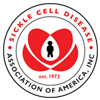Trusted Resources: Evidence & Education
Scientific literature and patient education texts
Increased false positive Down syndrome screening in women with sickle cell anemia
source: Prenatal Diagnosis
year: 2015
authors: Kneitel AW, Rhee-Morris L, Obadia R, Towner D
summary/abstract:OBJECTIVES:
This study seeks to determine whether there is a higher rate of false positive serum screening for Down syndrome in women with sickle cell anemia and, if so, which markers contribute to the false positive screen.
METHODS:
This is a retrospective cohort study of women who had serum screening between 1998 and 2011. Subjects were women with sickle cell anemia (n = 13), and controls were African American women who did not have that disease (n = 91). The populations were compared using basic inferential statistics.
RESULTS:
The positive screen rate was 38.5% (5/13) in women with sickle cell anemia and 7.7% (7/91) in the control population (odds ratio 7.5, 95% confidence interval 1.6-35.8, P = 0.001). At the average age of the cases (25 years), the expected false positive rate is only 2%. The human chorionic gonadotrophin values were significantly higher in cases than controls (2.00 and 1.30 MoM, P = 0.017), whereas levels of other serum analytes were similar. None of the screen positive results were associated with a fetus or neonate affected by Down syndrome.
CONCLUSIONS:
The false positive Down syndrome serum screen rate is significantly higher in patients with sickle cell anemia than in African American women without that disease. The human chorionic gonadotrophin values were significantly higher in cases than controls, suggesting that placental factors may contribute to the elevated false positive rate.
DOI: 10.1002/pd.4610
read more full text
Related Content
-
Volume of white matter hyperintensities is an independent predictor of intelligence quotient and processing speed in...Sickle cell disease can be complicated b...
-
How to Prepare Your Family in Case COVID-19 Spreads in Your CommunityHere is what you can do to prepare your ...
-
2023 Celebrating a Second Chance at Life Survivorship Symposium – VirtualWelcome to 2023 Celebrating a Second Cha...
-
Ginna Priola, MDGinna Priola is a pediatric hematologist...
-
Individuals with Disabilities Education Act (IDEA)The U.S. Department of Education’s Ind...
-
The Regional Comprehensive Sickle Cell Center at Robert Wood Johnson Medical SchoolThe Division of Hematology provides spec...
To improve your experience on this site, we use cookies. This includes cookies essential for the basic functioning of our website, cookies for analytics purposes, and cookies enabling us to personalize site content. By clicking on 'Accept' or any content on this site, you agree that cookies can be placed. You may adjust your browser's cookie settings to suit your preferences. More Information
The cookie settings on this website are set to "allow cookies" to give you the best browsing experience possible. If you continue to use this website without changing your cookie settings or you click "Accept" below then you are consenting to this.




 +myBinder
+myBinder
